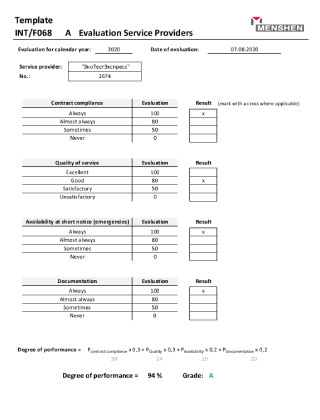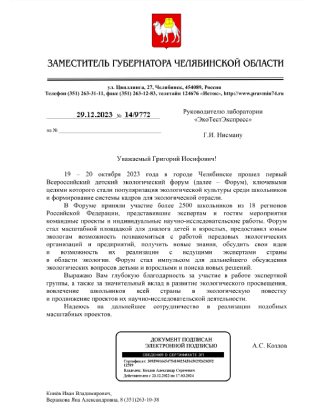Micro transport solutions are revolutionizing urban mobility, offering a swift and sustainable answer to the first and last mile challenge. By embracing these agile options, cities can unlock a future of reduced congestion and cleaner, more connected communities.
The Rise of Last-Mile Mobility
The urban landscape is undergoing a seismic shift with the explosive rise of last-mile mobility. This revolution, driven by the need to fill the critical gap between public transit hubs and final destinations, has flooded city streets with a new wave of micromobility solutions. From electric scooters zipping through traffic to dockless bikes unlocked by a smartphone, these options offer unparalleled convenience and flexibility. This dynamic sector is not just a trend; it represents a fundamental rethinking of urban transport, promoting a shift away from car dependency and championing a more connected, efficient, and sustainable urban future for everyone.
Defining the Last-Mile Challenge
The rise of last-mile mobility is fundamentally changing how we navigate our cities. This urban transportation revolution addresses the frustrating gap between public transit stops and a person’s final destination. Instead of a long, inconvenient walk, people are now hopping onto a diverse fleet of shared, lightweight vehicles. This surge is fueled by a potent combination of smartphone apps, GPS tracking, and consumer demand for instant, flexible travel options. The growing urban micro-mobility market offers a convenient solution that reduces traffic congestion and provides a fun, efficient way to get around town.
How Compact Vehicles Are Bridging the Gap
The rise of last-mile mobility is fundamentally changing how we navigate our cities. This urban transportation revolution addresses the critical gap between public transit stops and final destinations. A new ecosystem of shared, electric vehicles has emerged, offering unparalleled convenience for short trips. micromobility solutions like e-scooters and e-bikes provide a flexible, fun, and often faster alternative to being stuck in traffic or waiting for a bus. This shift is not just about new gadgets; it’s about creating more connected and less congested urban environments for everyone.
The Economic Impact on Urban Logistics
The rise of last-mile mobility is fundamentally reshaping urban transportation, offering a swift and convenient solution to the perennial challenge of connecting commuters from transit hubs to their final destinations. This micro-mobility revolution, driven by a surge in electric scooters, bikes, and compact vehicles, directly confronts urban congestion and reduces carbon footprints. sustainable urban logistics are now within reach as cities integrate these agile options into their transit networks. This shift represents more than a trend; it is a permanent reimagining of city navigation. The widespread adoption of these services highlights a clear public demand for flexible, efficient, and eco-conscious alternatives to traditional travel methods.
Exploring the Fleet of Modern Micro-Mobility
The modern micro-mobility fleet has evolved far beyond simple docked bicycles, now encompassing a diverse ecosystem of dockless e-bikes and electric scooters. These vehicles are equipped with GPS tracking, robust swappable batteries, and sophisticated IoT connectivity for operational management. This technological backbone enables providers to optimize vehicle distribution and maintenance through data analytics. Despite their convenience, these fleets present ongoing challenges for urban infrastructure and regulation. The continuous innovation in this sector highlights a significant shift towards sustainable urban transit, aiming to reduce congestion and carbon emissions in densely populated areas.
Electric Scooters and E-Bikes: A Public Phenomenon
The hum of a shared e-scooter is the new soundtrack of urban exploration. Modern micro-mobility fleets offer a thrilling, on-demand key to the city, transforming tedious commutes into breezy adventures. This surge in sustainable urban transportation solutions is redefining our streets. Riders weave through traffic, discovering hidden alleyways and local cafes inaccessible by car, each journey a small story of reclaimed time and spontaneous discovery.
Electric Skateboards and One-Wheeled Devices
Exploring the modern micro-mobility fleet reveals a sophisticated ecosystem far beyond simple scooters. Today’s urban mobility solutions include robust e-bikes, compact e-mopeds, and next-generation shared vehicles equipped with IoT sensors for real-time fleet management. For city planners, the key is prioritizing durable hardware and swappable battery systems to ensure operational efficiency and reduce environmental impact. Adopting integrated mobility platforms is essential for sustainable urban transport, creating a seamless network that complements public transit and reduces private car dependency.
Ultra-Compact Electric Vehicles and Pod Cars
Exploring the fleet of modern micro-mobility reveals a diverse ecosystem of shared, electric-powered vehicles designed for short urban trips. This sector has evolved beyond simple dockless scooters to include a range of options such as e-bikes, electric mopeds, and even compact e-cars. These solutions aim to fill the crucial first-and-last-mile transportation gap, reducing urban congestion and personal carbon footprints. The success of these shared mobility solutions hinges on seamless digital integration, robust infrastructure, and thoughtful municipal regulation to ensure safety and accessibility for all city dwellers.
Technology Powering Personal Transit
Technology is fundamentally reshaping personal transit through a convergence of advanced hardware and sophisticated software. Electric propulsion systems, lightweight composite materials, and long-lasting battery technology form the physical foundation. Guiding these vehicles are powerful artificial intelligence and sensor fusion, enabling real-time navigation and obstacle avoidance. Connectivity via the Internet of Things allows vehicles to communicate with each other and smart city infrastructure, optimizing traffic flow and enhancing safety. This integration of mechanics and data analytics is paving the way for efficient, on-demand autonomous vehicles, promising a future of safer and more personalized urban mobility.
Battery Innovations and Range Capabilities
Technology is revolutionizing how we move, with personal transit shifting from sci-fi to reality. Electric propulsion provides the clean, quiet power, while advanced batteries offer the range for daily commutes. The real magic, however, lies in the **future of urban mobility**, driven by sophisticated sensors and AI that enable self-balancing and obstacle avoidance. From e-scooters to electric unicycles, these smart devices are creating a new, efficient, and personalized layer of transportation for navigating our cities.
**Q: Are these personal vehicles safe?**
**A:** Modern models have multiple safety features like automatic headlights, responsive brakes, and learning modes for beginners, but wearing a helmet is always a must.
The Role of IoT and Connectivity in Fleet Management
Technology is fundamentally reshaping personal transit, moving us beyond traditional car ownership. The future of urban mobility is being built on a convergence of electrification, connectivity, and automation. We are witnessing the rise of a new ecosystem, from electric scooters and e-bikes to autonomous vehicle concepts, all managed by sophisticated IoT platforms.
This shift is not merely about new vehicles, but about creating an integrated, on-demand network that prioritizes efficiency and accessibility over individual ownership.
Key advancements include long-lasting solid-state batteries, 5G-enabled vehicle-to-everything communication for safety, and AI-driven routing algorithms that optimize traffic flow and reduce congestion.
GPS and App Integration for Seamless User Experience
Technology is fundamentally reshaping personal transit, moving us beyond traditional car ownership. Autonomous vehicle navigation systems, powered by AI and a network of sensors, are the cornerstone of this revolution. These vehicles promise a future with dramatically reduced accidents and optimized traffic flow.
This shift is not merely about convenience; it represents a complete reimagining of urban mobility and space.
The ecosystem includes electric propulsion, seamless ride-hailing apps, and even e-scooters, all integrated through the Internet of Things. This convergence creates a safer, cleaner, and more efficient transportation network for everyone.
Urban Planning and Infrastructure Adaptation
As the city breathes, its old veins and bones strain under the weight of new life. The concrete rivers flood, the asphalt skin cracks with heat, and the ancient grid groans. This is the urgent call for Urban Planning and Infrastructure Adaptation. It’s a story of retrofitting resilience into the very skeleton of our metropolises, weaving green arteries through grey corridors and raising defenses not just against the weather, but against obsolescence itself. The future of the city depends on this proactive metamorphosis, a continuous and intelligent reshaping of our habitat to ensure it not only survives but thrives for generations to come.
Designing Cities for People, Not Just Cars
Urban planning and infrastructure adaptation are no longer just about building new roads or zoning districts; they are dynamic fields focused on future-proofing our cities against climate change and rapid population growth. This proactive approach to **resilient city design** involves transforming existing systems to be more flexible and robust. Planners and engineers are now integrating green infrastructure, such as permeable pavements and urban forests, to manage stormwater naturally. They are retrofitting buildings for energy efficiency, redesigning transit for multi-modal mobility, and fortifying coastal defenses. This continuous evolution ensures our urban environments can not only withstand shocks but also thrive, creating sustainable and livable spaces for generations to come.
The Need for Dedicated Lanes and Parking Hubs
Urban planning and infrastructure adaptation are critical for building resilient cities. Expert advice emphasizes moving beyond static master plans to embrace dynamic, forward-looking strategies. This involves integrating climate projections and smart technologies into core systems. Key actions include retrofitting stormwater management for flood resilience, decentralizing energy grids with renewables, and redesigning transit networks for multimodal access. This proactive approach to sustainable urban development future-proofs communities against environmental and social shocks, ensuring long-term economic vitality and quality of life for all residents.
Integrating with Public Transit Systems
Urban planning and infrastructure adaptation are critical for building climate-resilient cities. Proactive strategies must move beyond traditional models to address escalating pressures from extreme weather, sea-level rise, and urban heat islands. This involves integrating green infrastructure, such as permeable pavements and bioswales, to manage stormwater, while reinforcing critical systems like power grids and public transit against disruptions. A truly resilient city is one that anticipates shocks and stresses, not just reacts to them. Key actions for municipalities include:
- Updating zoning codes to restrict development in high-risk floodplains.
- Retrofitting existing buildings for greater energy efficiency and durability.
- Implementing smart technology for real-time monitoring of infrastructure health.
This forward-thinking approach to
sustainable urban development
Weighing the Benefits and Challenges
Navigating any new venture requires carefully weighing the benefits and challenges. This dynamic process involves envisioning the profound rewards, such as strategic growth and competitive advantage, while also confronting the practical hurdles of implementation and resource allocation. True success is not found in avoiding obstacles but in proactively developing a clear plan to manage them. By honestly assessing both sides, organizations can move forward with confidence, turning potential roadblocks into stepping stones for innovation and ensuring that the ultimate payoff justifies the initial investment.
**Q: Why is it important to consider challenges alongside benefits?**
**A:** Acknowledging challenges early allows for proactive risk management, creating a more resilient and realistic path to achieving the benefits.
Environmental Advantages and Emission Reductions
Navigating the landscape of any major initiative requires a clear-eyed assessment of its potential. While the benefits, such as increased efficiency and market growth, are compelling, the inherent challenges, including https://blinkee.city/ resource allocation and potential disruption, cannot be ignored. A successful strategic implementation hinges on this honest evaluation. This process of weighing advantages against obstacles is fundamental to effective risk management. Ultimately, a thorough analysis transforms potential hurdles into a actionable roadmap, ensuring that the pursued opportunities yield a substantial and sustainable return on investment.
Addressing Safety Concerns and Regulatory Hurdles
Navigating any new venture is a journey of contrasts, where the scales of progress constantly tip between gain and strain. A startup founder, for instance, balances the exhilarating freedom of being their own boss against the daunting weight of financial uncertainty and relentless hours. This delicate equilibrium defines success. The strategic decision-making process involves carefully evaluating each pro and con, much like a captain reading the stars and the storms to steer the ship forward, ensuring that the potential for innovation and impact ultimately outweighs the inherent risks of the uncharted path.
Issues of Clutter and Public Space Management
When considering any new venture, weighing the benefits and challenges is a crucial first step. This process of **strategic decision-making** helps you move forward with realistic expectations. You’ll identify exciting opportunities for growth while also spotting potential roadblocks. For instance, you might list out the pros and cons to visualize the trade-offs.
Acknowledging the hurdles upfront doesn’t mean you can’t succeed; it means you’re prepared to handle them.
Ultimately, this honest assessment allows you to create a smarter, more resilient plan, turning potential obstacles into manageable tasks and maximizing your chances for a positive outcome.
The Future Landscape of Urban Travel
The future landscape of urban travel is pivoting from car-centric models to integrated, intelligent mobility ecosystems. We foresee a seamless network where public transit forms the backbone, supplemented by on-demand micromobility options and shared autonomous vehicles. This Mobility-as-a-Service (MaaS) approach, powered by AI, will optimize routes in real-time, drastically reducing congestion. The key will be prioritizing people over vehicles, reclaiming space for pedestrians and greenways, ultimately creating a more efficient and human-centric urban experience.
Autonomous Technology in Personal Mobility
The future landscape of urban travel is pivoting towards integrated, sustainable mobility ecosystems. The era of private car dominance is closing, replaced by a seamless multi-modal transportation network where public transit forms the backbone, supplemented by on-demand micro-mobility and autonomous shuttles. Success hinges on Mobility-as-a-Service (MaaS) platforms, which unify planning, booking, and payment into a single, user-centric experience. This evolution promises not only to declutter our cities but also to drastically reduce carbon emissions, creating more livable, efficient urban environments for everyone.
Subscription Models and Mobility-as-a-Service
The future landscape of urban travel is pivoting towards integrated, sustainable mobility ecosystems. The era of private car dominance is receding, replaced by a seamless network of options. Key developments include the rise of Mobility-as-a-Service (MaaS) platforms, the electrification of public and private transport, and the maturation of autonomous vehicle technology. This shift promises to alleviate congestion, reduce emissions, and create more livable urban spaces. The ultimate goal is a user-centric, efficient, and environmentally sound transportation model, fundamentally reshaping how we navigate our cities.
Predicting the Next Wave of Innovation
The future landscape of urban travel is being radically reshaped by **integrated mobility solutions**. We are moving beyond single-car ownership toward seamless, multi-modal ecosystems. Imagine a single app planning a journey combining an autonomous electric shuttle, a micromobility device for the last mile, and real-time public transit data. *This interconnected network promises not just convenience but a fundamental rewiring of our city streets.* The focus shifts from traffic management to optimizing passenger flow, reclaiming space for people and creating cleaner, more efficient urban centers.



















